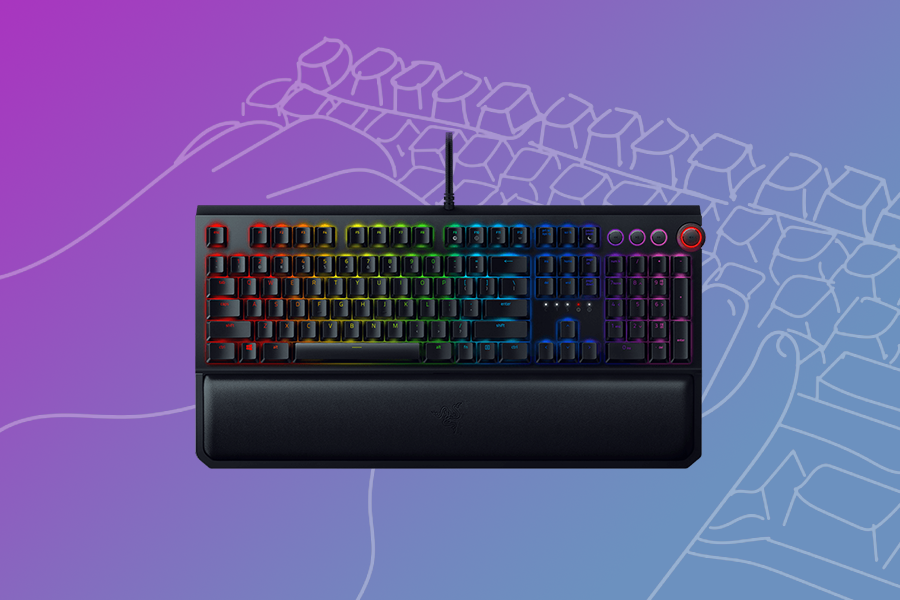Optus Mobile Review ALDI Mobile Review Amaysim Mobile Review Belong Mobile Review Circles.Life Review Vodafone Mobile Review Woolworths Mobile Review Felix Mobile Review Best iPhone Plans Best Family Mobile Plans Best Budget Smartphones Best Prepaid Plans Best SIM-Only Plans Best Plans For Kids And Teens Best Cheap Mobile Plans Telstra vs Optus Mobile Optus NBN Review Belong NBN Review Vodafone NBN Review Superloop NBN Review Aussie BB NBN Review iiNet NBN Review MyRepublic NBN Review TPG NBN Review Best NBN Satellite Plans Best NBN Alternatives Best NBN Providers Best Home Wireless Plans What is a Good NBN Speed? Test NBN Speed How to speed up your internet Optus vs Telstra Broadband ExpressVPN Review CyberGhost VPN Review NordVPN Review PureVPN Review Norton Secure VPN Review IPVanish VPN Review Windscribe VPN Review Hotspot Shield VPN Review Best cheap VPN services Best VPN for streaming Best VPNs for gaming What is a VPN? VPNs for ad-blocking An old-school membrane-based keyboard gets the job done and is objectively quieter. But a mechanical gaming keyboard is an absolute must if you want more responsive gaming, and is an absolute must if you’re an older gamer (like me) looking to reclaim your lost reflexes, or a gamer of any age seeking a competitive edge online. Ultimately, if you are looking for gaming peripherals that offer measurable in-game advantages, you want to start with a great gaming mouse and a solid gaming headset before investing in a gaming keyboard. For gaming keyboards, let’s get clacking with the list. • Multiple USB cables needed to power RGB That comfort comes by way of a detachable wrist rest that’s a cinch to connect or remove. Despite being detachable, it’s got a firm desk grip that’s enough to be practical for even the most intensive typing or fragging session. Speaking of performance, the individual key switches on the Huntsman Elite are amazingly speedy to the point that you have to eliminate membrane-keyboard bad habits of resting your fingers on keys with any amount of pressure applied. This learning curve may sound frustrating, but the competitive (and words-per-minute) gains are absolutely worth the retraining. The Huntsman Elite is definitely closer to enthusiast-grade ‘investment’ than ‘budget-friendly’ in terms of the cost, but it’s still worth it, unless you’re a gamer who’s big on macros (there aren’t any dedicated macro keys) and/or USB pass-through.
Membrane keyboards (linear) are noticeably cheaper than mechanical keyboards (tactile), but keystrokes register noticeably slower Mechanical switches vary in performance, but mostly boil down to personal preference Manufacturers like Razer and Logitech have different names for their mechanical switches, but their characteristics are still comparable to the Cherry switches below Cherry MX Red switches are quietest; Cherry MX Black switches require more force; Cherry MX Brown switches are springy; Cherry MX Blue switches are clicky; Cherry MX Silver switches are speediest Tenkeyless keyboards save space by removing the numerical keypad on the right of a traditional keyboard (and may remove other keys to be even smaller) Keyboards that require low pressure (measured in grams) and have short actuation points can feel overly responsive to the lightest touch: lower numbers are faster, but whether they’re better is personal preference Gaming keyboards with macro keys are handy for fans of strategy games, and also gamers who like to tweak input controls incessantly Most gaming keyboards operate best when paired with software that lets you tweak settings and save profiles Like other peripherals, RGB lighting is entirely aesthetic and doesn’t offer any competitive advantage
Despite its full-size design and aluminium base, the Alloy Origins is a ’board that’s built to travel. It’s not as tall as most gaming keyboards, saving space by ditching macro keys and even dedicated media controls. Those are noticeable cons for fans of both, but media playback can be controlled with f-key combos. The other perk that makes the Alloy Origins a versatile traveller – or a gaming keyboard that can easily be switched out for something else – is the detachable USB-C cable. Given the increasing prevalence of this USB standard, it means you can be AFK and charging a USB-C-capable wireless gaming mouse, smartphone, or tablet. It’s great to see HyperX shunning the stubborn trend of fixed or brand-specific attachments. The keystrokes feel glorious, too: fast, responsive, and comparatively quiet even with mechanical switches. Logitech has ditched everything but the bare essentials, so you’ll have to get used to f-keys for media playback and other functionality (including macros) that might otherwise have a dedicated physical key on another multipurpose gaming keyboard. That said, the Logitech G512 is a joy to play and type on, with a tactile and audible click feedback for the GX Blue variant that lets you know exactly when your keystrokes are registers. It’s louder than some of the other options above, but not obnoxiously so. If you’re not a fan of the click, you can opt for a GX Red (quieter) or GX Brown (springier) variant instead. Those fond of RGB lighting will find the illumination options illuminating via the easy-to-use downloadable Logitech G Hub software. Expect to see your shooter responsiveness improve with the G512, more so if you’re upgrading from a membrane keyboard. Plus, USB pass-through means you can connect compatible devices while you play. The Logitech G Pro X is our current pick of this gaming keyboard subgenre, which is light enough to be mobile, but still weighty enough to stay still while playing. Despite the size-over-function nature of tenkeyless ’boards, it’s a nice touch that Logitech has retained a dedicated win-lock key to avoid accidental game minimisation through an erroneous press of the Windows key. Other everyday functions are relegated to f-key combos, but you’re really buying this keyboard solely for gaming and not everyday use. Logitech’s Romer G key switches are a great mix of responsiveness, reasonable keystroke pressure, and comparatively quiet, too. The best bit with the G Pro X, though, is if you don’t like the particular switches it comes with, they keys are built to pop out and you can buy (expensive) replacements that snap into place. Case in point, the Logitech G613. It’s an oldie but a goodie, and the first wireless mechanical keyboard where ‘mechanical’ means it’s aimed at gamers. The G13 is a bit bulky with what feels like some wasted space, but the inbuilt wrist rest is comfortable, and the overall size doesn’t feel unwieldly whether you’ve got it on a desk, a table, or balanced on your lap. Logitech has clearly built this with a mix of gaming and everyday use in mind, so you can take advantage of the dedicated media playback buttons for the former, then have the versatility of six left-keyboard macro keys and a dedicated win-lock key. The battery life you get from two AAs is massive, while being able to connect to multiple devices (via Bluetooth) makes for a versatile keyboard. Meanwhile, the Romer-G keys are a great mix between quietness and performance. Logitech’s Lightspeed Wireless technology tops it all off – the same kind used in its responsive wireless gaming mice – for 1ms report rate when using the USB receiver for a wireless gaming keyboard that performs as though it’s wired. For something a littler wackier that’s specifically built for hardcore gamers, the Razer Tartus Pro is a gaming keypad with 30 programmable optical-switch keys, where the side-mounted joystick means you can easily free up four fingers for inputs and keep your thumb for controlling in-game movement. There’s a learning curve, but the benefits are worth it.





